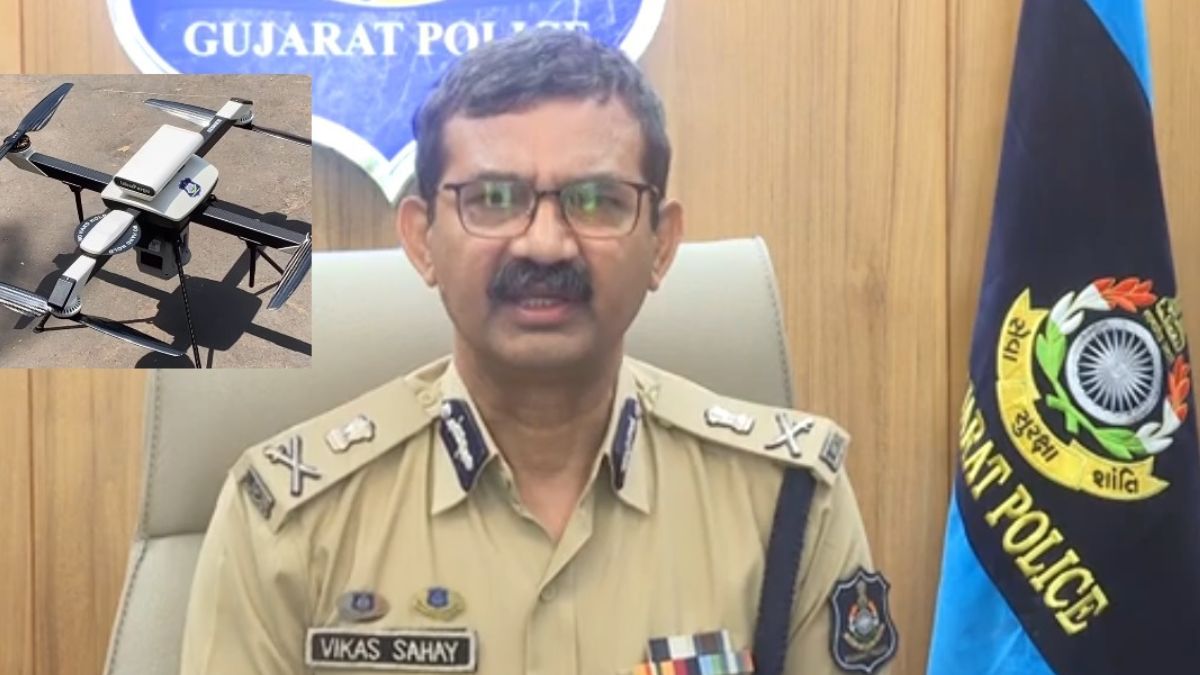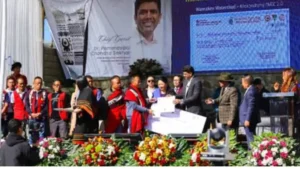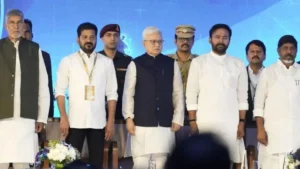The GP-DRASTI (Drone Response and Aerial Surveillance Tactical Interventions) program, introduced by the Gujarat police, marks a significant leap in modernizing law enforcement in the state. This initiative involves using quadcopters for enhanced crime monitoring, quicker response times, and better crime scene documentation. The program is designed to be a quick reaction force multiplier and evidence gatherer, particularly in the urban areas of Ahmedabad, Rajkot, Surat, and Vadodara, which have witnessed a surge in gang-related violence. Drones, which have been used for various policing tasks, are now being integrated at the police station level, allowing for real-time surveillance and faster deployment to crime scenes.
Key Features of the GP-DRASTI Drone Program
Objective and Purpose
- Quick Response: The program aims to improve response time for police forces in areas where incidents such as gang violence, stabbings, and rioting are frequent.
- Evidence Gathering: Drones are equipped to capture high-definition footage, which can be used for investigation and prosecution.
- Crime Prevention: It seeks to prevent incidents like street violence, mob lynchings, and showings of weapons by monitoring vulnerable areas proactively.
How It Works
- Integration with Police Control: Upon receiving a call, the control room coordinates both the drone and ground teams, enabling simultaneous deployment to the scene. Drones reach the location much quicker than traditional PCR vans.
- Real-Time Video Streaming: Drones provide live footage to police stations, allowing officers to assess situations in real-time and decide whether to send more personnel.
- Targeted Flight Paths: The drone can be set to fly directly to landmarks, after which it can be maneuvered to specific locations based on the situation’s urgency.
Operational Scope
- Crime Hotspots: The drones will primarily cover 33 police stations across the four cities known for a high number of bodily harm-related crimes like assault, rioting, and unlawful assemblies. These areas were identified through the SHASTRA program, launched earlier in 2025.
Drone Specifications
- Flight Ceiling: Drones operate at 120 meters, with a range of 4 kilometers and flight time of 45 minutes.
- Camera Capabilities: Equipped with high-definition cameras capable of zooming up to 1 km and night vision. These features ensure detailed surveillance day and night, even in low-visibility conditions.
- Target Following: The drones can lock onto and track fixed targets, useful in both surveillance and criminal intercept situations.
Technology and Training
- Drone Base Stations: The drones will be operated from centralized base stations, ensuring they remain within the effective range of 4 kilometers.
- Staff Training: The program will initially train 16 staff members in handling the drones, and additional training will be provided as more drones are procured.
- Aerial ID System: The drones are capable of capturing facial features, aiding in crowd identification during criminal activities.
| Summary/Static | Details |
| Why in the news? | Gujarat Police’s GP-DRASTI Drone Program: Enhancing Public Safety |
| Program Name | GP-DRASTI (Gujarat Police – Drone Response and Aerial Surveillance Tactical Interventions) |
| Primary Objective | Quick reaction force, evidence gathering, and enhanced response time to crimes |
| Coverage Area | Ahmedabad, Rajkot, Surat, and Vadodara; focus on 33 police stations |
| Drone Specifications | – Flight Ceiling: 120 meters – Flight Time: 45 minutes – Range: 4 km |
| Camera Capabilities | Zoom up to 1 km, HD quality, Night Vision |
| Training | 16 initial staff members to be trained in drone handling |
| Target Identification | Facial recognition, capturing ID in large crowds |



 Brookfield to Invest $1 Billion to Build...
Brookfield to Invest $1 Billion to Build...
 Nagaland Launches Mission Punarutthan Du...
Nagaland Launches Mission Punarutthan Du...
 Telangana Global Summit Secures ₹5.75 La...
Telangana Global Summit Secures ₹5.75 La...







